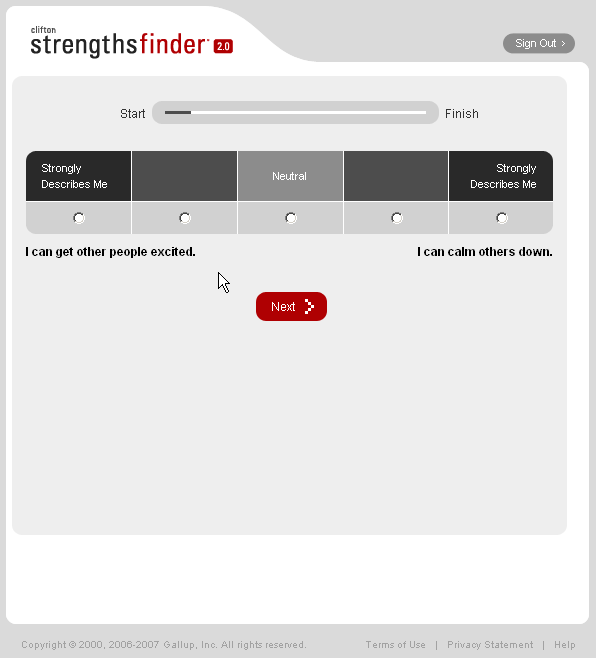Dimensions video series
I just finished watching the challenging Dimensions video series - 9 videos, each 13 minutes long, which teach you how to visualize objects in 4 dimensions. I watched each video as my evening treat for the past week.
Videos 1 and 2 are basic, and you might find parts of them a bit boring. But they're important for the later videos – especially the bit about how rolling a sphere around affects its stereographic projection.

In videos 3 and 4, we start to get into the good stuff: the fourth dimension. For example, if we want to visualize the 4-dimensional equivalent of a cube (called a "hypercube", with 16 nodes and 32 edges), we can get a feel for it by "stereographically projecting" it into 3-dimensions:
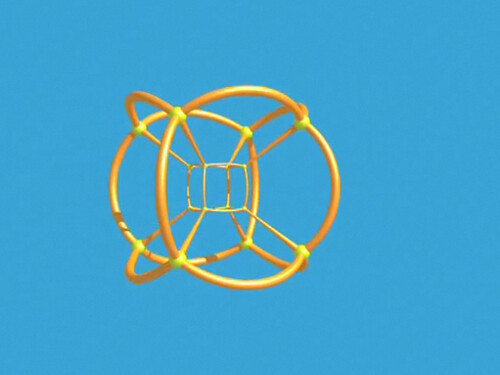
Wow!
Next, videos 5 and 6 delve into complex numbers. It was neat to finally get a visual explanation of what the Mandelbrot set represents. It's tricky - it's the set of points for which the Julia set (the blue shape on the right) appears. Outside of the Mandelbrot set, the Julia set disappears.
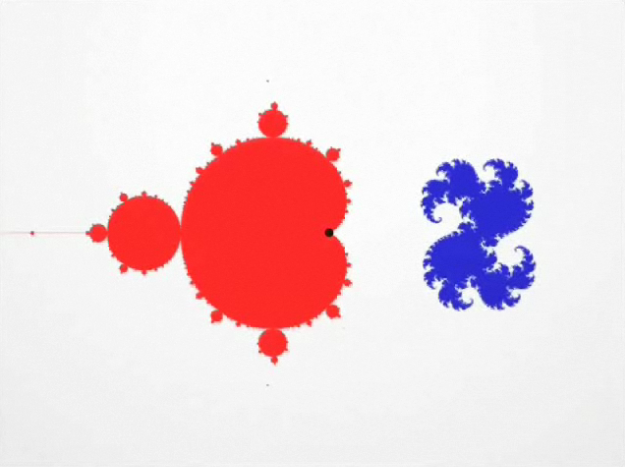
Video 6 finishes with a beautiful zoom deep into the Mandelbrot set.

Videos 7 and 8 were the most difficult and had me pressing the pause button quite a bit to try to understand what was said. For example, in Video 7 we learn how to divide up a 4-dimensional sphere into circles ("decomposing S3 into its Hopf circles"). Many replays later, I think I get the general idea.
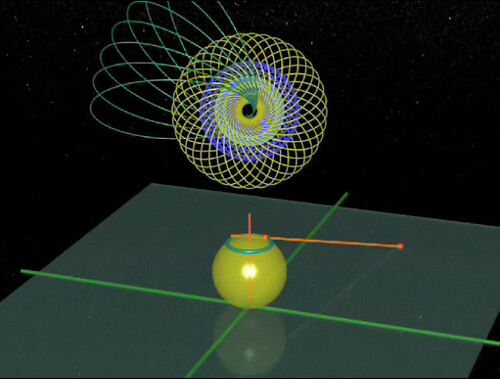
Video 8 almost totally lost me, but I think I get it now. If you highlight a torus (a doughnut shape) in a 4-dimensional sphere (yes, a torus can be a subset of a 4-dimensional sphere) and then stereographically project the torus into 3 dimensions, you get a deformed torus - and it gets REALLY deformed as you roll the sphere around in 4-D land:
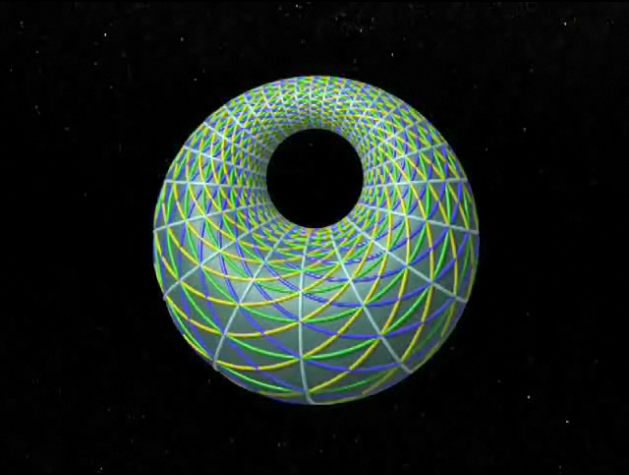


These videos have amazing animated visualizations that you'll find nowhere else. And they have a great soundtrack to boot. Go watch!
Videos 1 and 2 are basic, and you might find parts of them a bit boring. But they're important for the later videos – especially the bit about how rolling a sphere around affects its stereographic projection.

In videos 3 and 4, we start to get into the good stuff: the fourth dimension. For example, if we want to visualize the 4-dimensional equivalent of a cube (called a "hypercube", with 16 nodes and 32 edges), we can get a feel for it by "stereographically projecting" it into 3-dimensions:

Wow!
Next, videos 5 and 6 delve into complex numbers. It was neat to finally get a visual explanation of what the Mandelbrot set represents. It's tricky - it's the set of points for which the Julia set (the blue shape on the right) appears. Outside of the Mandelbrot set, the Julia set disappears.

Video 6 finishes with a beautiful zoom deep into the Mandelbrot set.

Videos 7 and 8 were the most difficult and had me pressing the pause button quite a bit to try to understand what was said. For example, in Video 7 we learn how to divide up a 4-dimensional sphere into circles ("decomposing S3 into its Hopf circles"). Many replays later, I think I get the general idea.

Video 8 almost totally lost me, but I think I get it now. If you highlight a torus (a doughnut shape) in a 4-dimensional sphere (yes, a torus can be a subset of a 4-dimensional sphere) and then stereographically project the torus into 3 dimensions, you get a deformed torus - and it gets REALLY deformed as you roll the sphere around in 4-D land:



These videos have amazing animated visualizations that you'll find nowhere else. And they have a great soundtrack to boot. Go watch!



